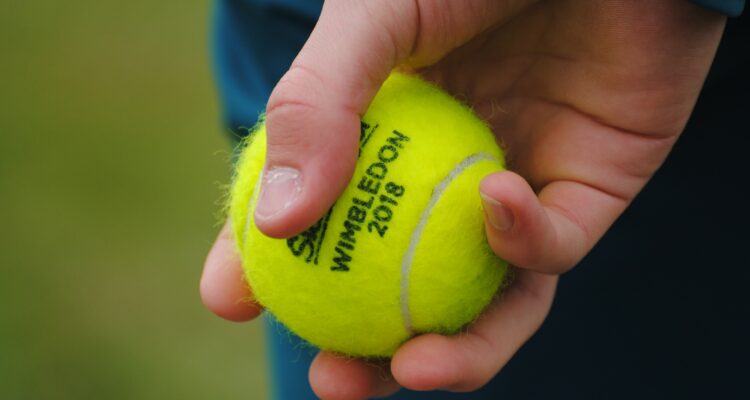WASHINGTON, July 17, 2018 (by Michael Dickens)
The 2018 Wimbledon fortnight will be remembered for many wonderful storylines woven into the mosaic of tennis. A few that come to mind: Novak Djokovic’s return to Grand Slam excellence, Angelique Kerber’s big win over Serena Williams that left her a French Open title shy of achieving a career Grand Slam, and the endearing work ethic and competitive desire of Rafael Nadal.
Here are five other things we also learned from this year’s Championships:
Youth is not always served
For the first time in the Open Era, all four of the men’s singles semifinalists were over the age of 30. Although the #NextGenATP kids are all right, it wasn’t the millennials’ fortnight to take charge and run roughshod over the All England Club turf. Instead, from 33-year-old John Isner to Kevin Anderson and Rafael Nadal, both 32, down to Novak Djokovic, the kid of the foursome at 31, the final weekend was all about the adults shining on Centre Court.
Meanwhile, the women’s final between 36-year-old Serena Williams and Angelique Kerber, 30, was the first thirty-something ladies’ championship since Virginia Wade triumphed over Betty Stove 41 years ago – back in the day when Queen Elizabeth of England was a spry 51.
Add to the mix, Mike Bryan, 40, who won the men’s doubles with Jack Sock in the absence of his injured twin brother Bob, has become the oldest doubles No. 1, and 43-year-old Kveta Peschke became the oldest player to compete in the women’s doubles final since the sport welcomed professionals in 1968.
Finally, on the subject of age, just weeks shy of turning 37, Roger Federer proved during the first week that he still has game. As many tennis scribes quickly pointed out, despite losing a tough five-setter to Anderson (13-11 in the fifth), he came through his five matches physically unscathed – and you’ve got to admit that he looked mighty sharp in his new Uniqlo kit.
Federer: Uniqlo vs. Nike
A serious point about Roger Federer’s new 10-year, $300 million mega-blockbuster deal with Uniqlo, as pointed out by Sports Illustrated executive editor and senior writer Jon Wertheim: “Business is business. Nike didn’t think he was worth the spend and commitment. He finds an alternative offer. It went unmatched. New contract reached. Sure, it’s a pity the status of the iconic RF logo is uncertain. It’s perhaps incongruous that a player who projects exclusive elegance is now with a mainstream brand. But overall, isn’t this how commerce and negotiation is supposed to work?”
Upsets, upsets, upsets!
While there’s been plenty of talk about reducing the number of seeds at the all of the majors from 32 to 16, which would certainly guarantee some unpredictability – and plenty of upsets – in early-round matchups, it should be noted that there were 21 first-round upsets among the 64 seeded (32 men and 32 women) players at this year’s Wimbledon. One need only look at the top 10 women’s seeds, lead by No. 1 Simona Halep and No. 2 Caroline Wozniacki. By the quarterfinals, all 10 top seeds were gone. It left Angelique Kerber, seeded No. 11, as the highest remaining seed during the last week of the tournament.
Final set tie-break needed
The mental and physical fatigue from the the six-hour plus marathon semifinal between Kevin Anderson and John Isner last Friday, in which the fifth set was stretched to 50 games (26-24 in favor of Anderson) and lasted nearly three hours alone, raised voices in favor of a fifth-set tie-break. Isner, whose 11-hour, five set (70-68 in the final set) 2010 Wimbledon victory over Nicolas Mahut, gives him some credibility to speak out on the issue, suggested a final-set tie-break be instigated at 12-all. Former Wimbledon champions John McEnroe (ESPN) and Boris Becker (BBC), who are now broadcast analysts, both spoke out in favor of change. Former British star Tim Henman, now a board member of the All England Club, was quoted by BBC Sport as saying “When we had the first Isner match, we didn’t think we would see that again. Now, I think it will be on the agenda for Wimbledon to discuss after the Championships.”
Djokovic found his mojo
After Novak Djokovic ended his two-year Grand Slam title drought by winning his fourth Wimbledon and 13th major, he said during the trophy presentation that there’s no better place in the world to start a comeback than at Wimbledon. After showing he’s still a big match player by enduring a five-set, two-day tug-of-war win over World No. 1 Rafael Nadal, then winning the final on zero days rest, Djokovic is back in the Top 10.
“I did not expect to be back in the top shape already here in Wimbledon so quickly,” said Djokovic. “If you asked me after Roland Garros, I would probably maybe doubt that. At the same time, there is a part of me that always believes in my own abilities, believes in my own quality of tennis, what I possess. Whenever I come to the tournament, and a Grand Slam especially, I believe I can have a good opportunity to fight for the trophy.”
Indeed, never doubt the greats of the sport – or write them off as being over-the-hill just because they’re over 30. That timeline has forever been extended, thanks to Roger Federer and Nadal winning the previous six major championships before Djokovic’s triumph on Sunday.






